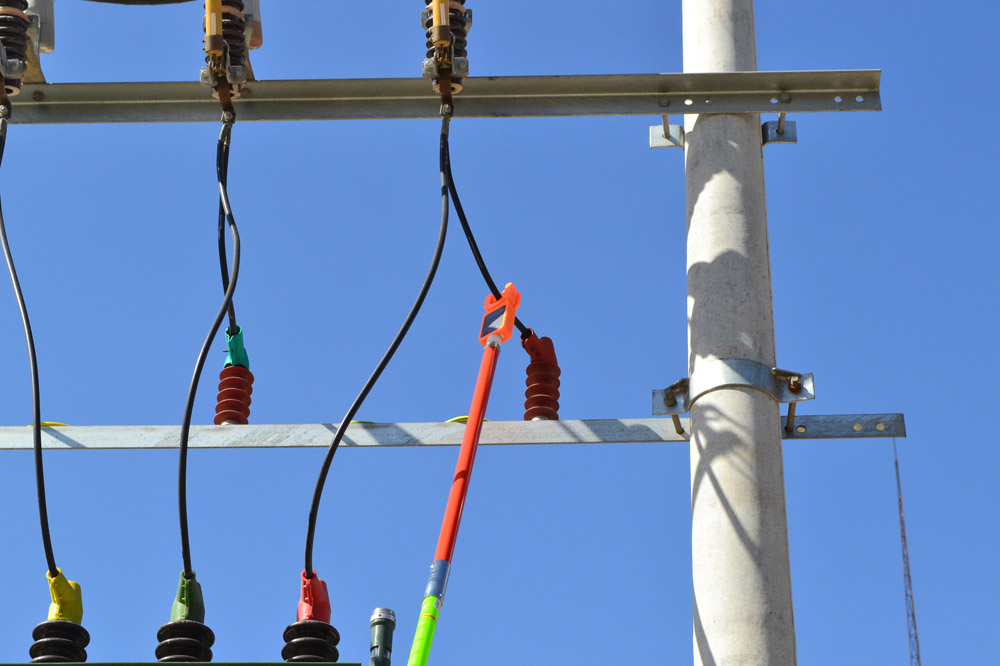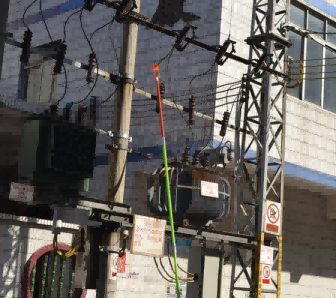With the rapid development of the rural economy and the implementation of policies such as the distribution of home appliances to the countryside, the level of rural electrification has continuously improved. The sharp increase in various electrical devices and loads has led to more frequent leakage faults. For rural power supply station administrators, safely and quickly locating leakage fault points in the distribution area to promptly restore power supply presents an urgent and challenging problem.
1.Causes of Leakage Faults in Distribution Areas The primary reason for the tripping of residual current devices in distribution areas is an increase in leakage current within the circuit. The main causes of leakage faults include:
(1).Leakage faults at the user end, such as damaged insulation of household appliances and wiring issues, like damaged insulation in rural home water pumps, refrigerators, non-standard indoor wiring installations, unauthorized ground wire connections, and the failure or absence of household residual current devices, leading to the tripping of the area's total residual current device or secondary branch protection. These faults are more concealed since they occur inside users' premises, making them difficult to locate.3.A New, Safe, and Rapid Method for Locating Leakage Faults -- ETCR9000 High and Low Voltage Clamp Meter
The new method for safely and quickly locating leakage faults employs the four-wire single-phase clamp meter technique. The steps include disconnecting the main circuit breaker, paralleling the low-voltage four-wire output (including the neutral line), then connecting a single-phase power supply before using the ETCR9000 high and low voltage clamp meter to measure and identify the leakage fault point phase by phase and level by level. This method reduces workload, accelerates fault location, and minimizes safety risks.
(1).Working Principle of the Four-Wire Single-Phase Clamp Meter Method By paralleling four wires and connecting them to a single-phase live wire, the neutral line also becomes a live wire. For phases without a ground fault, since no current loop is formed, there is no current or the current is negligible. For phases with a leakage fault, a current loop is formed between the phase wire and the ground, resulting in a significant loop current, which is the leakage current.
(2).Operational Steps for the Four-Wire Single-Phase Clamp Meter Method
Initial Measurement and Determination: First, cut the power to the leakage circuit in the distribution room (box). After confirming there is no voltage, remove the A, B, C phase fuses and disconnect the neutral line (N). If there are no fuses, disconnect the outgoing lines, including the neutral line, and mark the neutral and other phase wires accordingly. Parallel the four wires and then re-energize using any one phase wire, making all four wires live. At this point, use the ETCR9000 high and low voltage clamp meter to measure each of the four wires. If one wire shows a significantly higher current value while the others are very low or zero, it indicates a severe leakage fault in the wire with the high current. If all four wires show notable readings, it suggests varying degrees of leakage in each phase. Regardless of the scenario, follow the principle of prioritizing higher current values to gradually locate the leakage fault point.
Reconfirmation at the First Pole: After identifying the leaking phase at the distribution room (box) end, use an insulating rod clamp meter at the first outgoing pole to reconfirm the phase with significant leakage and remember this phase. Then, gradually measure along this phase towards the receiving end to locate the fault. For T-branch locations, use the T-branch pole as a reference, measure the main line at point A1 (towards the receiving direction), then measure the branch line at point A2. If the main line at A1 shows a significant leakage value and A2 does not, the fault lies further along the main line, not on the T-branch. For cross-branch locations, use the cross-branch pole as a reference, first measure the main line at A1 (towards the receiving direction). If no leakage is shown, the fault is at point A2 (on the “十” side of the branch) or A3 (on the “一” side of the branch). If both A2 and A3 show leakage currents, it indicates multiple ground faults. Follow the principle of starting with higher current values to step-by-step locate the leakage fault point. By following these steps progressively, you can quickly locate the severe leakage fault point or user. This method is also efficient and accurate for locating theft of electricity via a single line to ground.



4.Introduction to the Tools Used in the Four-Wire Single-Phase Clamp Meter Method The measurement process utilizes the ETCR9000 high and low voltage clamp meter, equipped with five insulating rods (each 1 meter long), facilitating ground-level measurement of low-voltage line current by repair personnel. This clamp meter features automatic range shifting and can hold measurement data. Its current transformer core is designed with an internal and external V-shaped open jaw for easy insertion and removal during distance measurement. When measuring, pause briefly (about 5 seconds) after the side-phase conductor enters the core to prevent measurement errors; the data can be held. Additionally, this clamp meter can store up to 99 measurement values in memory for reference.
5.Advantages of Using the Four-Wire Single-Phase Clamp Meter Method
(1).Improved work efficiency. The four-wire single-phase clamp meter method eliminates the need for repeated power outages to identify faults, allowing for continuous tracking along the line until the leakage fault point is found. There's no need for pole climbing to disconnect or connect, saving operational time and improving efficiency. Only 2-3 people (including one for safety supervision) are needed to complete the search.

info@etcr.net
(86-757)66860936
(+86)13802922567